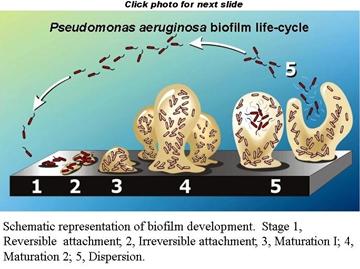Microbiology course
Thursday, April 3, 2014
Spore stain
Gram Stain
This is the most important stain in bacteriology and is so central to identification that it should be practised until the operator is fully competent. A number of different variations are found, and the laboratory should standardise on one method.
Saturday, March 29, 2014
A General Model for Biofilm Development
Biofilm formation is
a developmental process in which bacteria undergo a regulated lifestyle switch
from a nomadic unicellular state to a sedentary multicellular state where
subsequent growth results in structured communities and cellular
differentiation. Results of prior work by many groups allow the construction of
a hypothetical developmental model for biofilm formation that can be
generalized for many different bacterial species. This model can be adjusted to
fit either of two general modes of unicellular lifestyle: nonmotile and motile.
Thursday, March 27, 2014
Transport of an Infectious Agent
Transmission involves
the transport of an infectious agent from the reservoir to the host. It is the
most important link in the chain of infection. Pathogens can be transmitted
from the reservoir to a susceptible host by various routes (Sobsey and Olson,
1983).
a. Person-to-Person
Transmission
The most common route
of transmission of infectious agents is from person to person. The best
examples of direct contact transmission are the sexually transmitted diseases
such as syphilis, gonorrhea, herpes, or acquired immunodeficiency syndrome
(AIDS).
Determination of Cell Biochemicals
Microbial biomass can
also be measured by determination of specific cell biochemical constituents
such as ATP, DNA, RNA, proteins, phospholipids, bacterial cell wall components,
or photosynthetic pigments (Sutton, 2002).
a.
ATP
Adenosine triphosphate
has often been used to determine live microbial biomass in environmental
samples, using a ratio of C/ATP
= 250 for aquatic
samples. However, the ATP content of cells varies with the growth rate and
metabolic state of microorganisms and nutrient limitation. A better measure is
the total
adenylate pool AT
(AT = ATP + ADP + AMP) because it does
not change greatly with changes in metabolic activities of the microorganisms.
The adenylate
energy charge (EC)
ratio provides information on growth potential of naturally occurring microbial
populations.
Subscribe to:
Posts (Atom)
